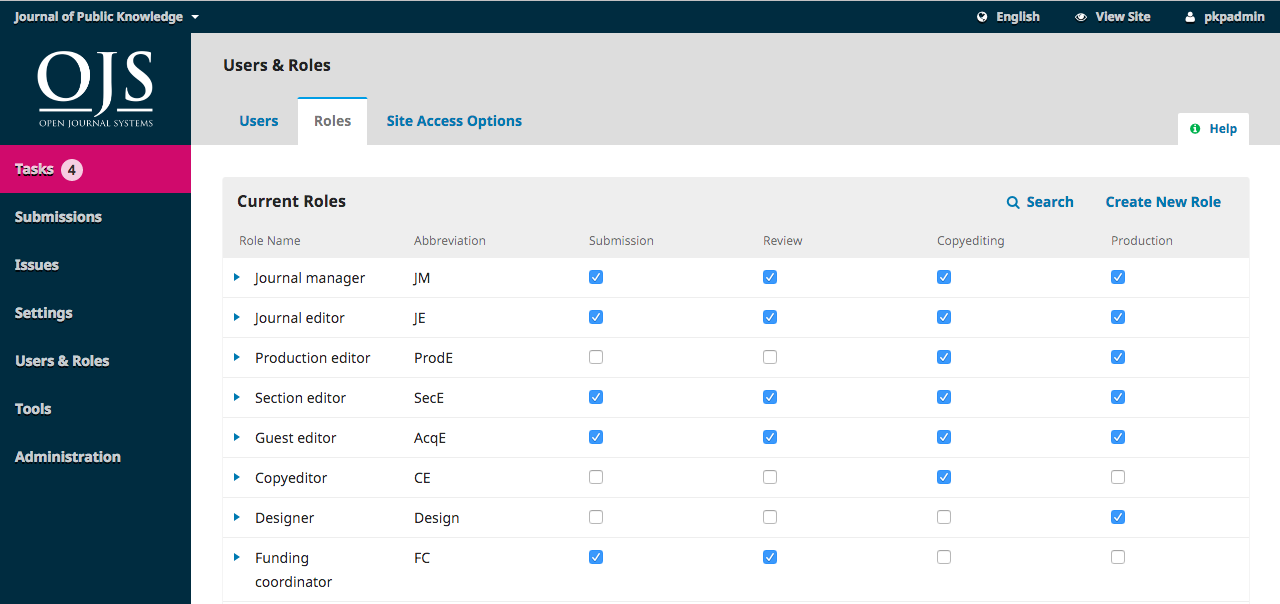Roles
Users in the system must have one or more roles.
Roles define what a user can do within the system. An Author can make submissions and little else. An Editor can manage submissions, and a Journal Manager can configure the journal's settings.
One user can have more than one role, for example, being a Journal Manager, Editor, and Author in the same journal.
OJS 3 has multiple roles available, each with different permission levels.

From this page, you can see each role, and the editorial stage each role can access. A good example of this is the Copyeditor role, which can only access the copyediting stage. Copyeditors cannot jump to the Review stage to see what happened during the peer review process. See Chapter 10 for more information about the different editorial stages.
Editing Roles
Unchecking a box removes access to that stage for users with that role.
Selecting the blue arrow to the left of the role name reveals the edit link. Clicking this opens the editing window.

Permission Level: This indicates how much a user with this role can do in any stage. The Journal Assistant level can communicate with other users and upload and revise files.
Role Name: You can use this field to easily rename any role.
Abbreviation: Each role must have a unique abbreviation.
Stage Assignment: This allows you to determine which stage users with this role can access.
Role Options: Use these checkboxes to show anyone with this role in the contributor list (e.g., the author list) as well as whether users can self-register in this role. Authors and Reviewers are good candidates for self-registration. You would definitely NOT want to allow users to self-register as Journal Managers or Editors!
Create New Roles
Use the Create New Roles link to open a window where you can create a new role for your journal, including setting which stages it can access and how much permission it should have.